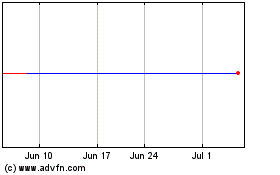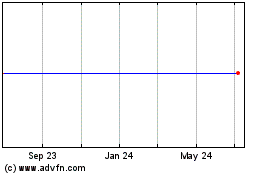Friday the 13th proved to be a mix bag, with credit holding firm
despite some banter that volatility could lead to a shock in the
markets. Treasurys rallied, while commodities and equities
fell.
Over the last decade, Friday the 13th has mostly been bullish
for stock and bond performance, said Ian Lyngen, government bond
strategist at CRT Capital Group. Both markets have sold off only
37% of the time.
This time, Treasurys rallied--with yields falling 8.6 basis
points compared to 4.4 basis points averaged across other Friday
13ths over the past 10 years. The Standard & Poor's 500 stock
index was off about 0.6%, compared to an average loss of about 0.8%
on other sessions that experienced a selloff.
Inflation data in the form of the U.S. consumer price index kept
fears of a near-term interest rate hike at bay. "Data came in as
expected on the inflation front, so that lack of meaningful upside
surprise cleared the way for bonds to firm into the weekend as
equities sold off," Lyngen said.
Government bonds also got a boost from the selloff in stocks and
commodities, but those gains were eased in the late afternoon as
the riskier assets recouped some losses.
Investment-Grade Bonds
Financial names were well represented among the 10 most active
issuers traded Friday, but generally corporates were stable and are
expected to continue strengthening.
"Investment-grade corporates are holding up rather well,
particularly given the weakness we have seen in equities," said
Wilmer Stith, portfolio manager of the $115 million MTB
Intermediate-Term Bond.
Issuance was heavy this week, with $21.8 billion in new supply,
according to data provider Dealogic. The year-to-date tally is
$382.3 billion across 994 issues, and $36.8 billion for the month
to date--slightly more than this time last year and on track for
about $70 billion by month-end, at the low end of expectations.
Xerox Corp. (XRX) was the latest company to take advantage of
cheap funding Friday, selling $1 billion in a two-part offering of
senior unsecured debt.
Xerox's $300 million floating-rate tranche was sold with a risk
premium of 0.82 percentage points over the three-month London
Interbank Offered rate, while a $700 million, 10-year piece was
sold with a 4.50% coupon at a price of 99.246 to yield 4.595%--a
risk premium of 1.45 percentage points over Treasurys.
The offering included a change-of-control provision, which is
designed to safeguard investors against event risk if the issuer is
taken over in a leveraged buyout or undergoes some other
fundamental corporate change. That covenant is triggered at a
premium of $101 or par, of face value.
Proceeds from the offering will be used to repay $650 million in
Xerox Capital Trust I notes bearing interest at 8% and falling due
in 2027, as well as some preferred securities.
Junk Bonds
Emergency Medical Services Corp. (EMS) sold $950 million of
senior unsecured eight-year notes to yield 8.125%, according to a
person familiar with the deal. The notes sold at par with an 8.125%
coupon, slightly inside of earlier price guidance that had
anticipated yields in the 8.25% area.
The bonds, which are non-callable for three years, were issued
by CDRT Merger Sub Inc. Emergency Medical Services brought the
offering to market last week to fund its $3.2 billion leveraged
buyout.
Also in the primary market, Thompson Creek sold $350 million of
senior eight-year notes at par to yield 7.375%, and Regent Seven
Seas sold $225 million of senior secured eight-year notes at par to
yield 9.125%.
Credit default swap prices on high-yield debt are currently a
truer reflection of underlying credit quality than cash bonds,
according to credit analysts at Barclays Capital. Bond spreads are
typically wider than CDS in high yield, but bond prices have moved
higher to the point where it makes sense for issuers to call the
debt in because they can refinance at a lower rate right now,
meaning there is only so far bond prices can rally.
That dynamic does not exist on the CDS side, because call
considerations do not affect derivatives. "So much of the market is
now trading above its next call price," said Mike Kessler, a credit
strategist at Barclays Capital. "As the call date approaches it
acts as a cap on further price appreciation, regardless of balance
sheet improvement. But CDS can't be called and still has been able
to tighten as credit quality improves."
Asset-Backed Securities
Panhandle Plains Higher Education Authority priced a $483
million student loan-backed bond Friday, according to a person
familiar with the matter. The $170 million triple-A rated, six-year
tranche priced at 1.15 percentage points over the three-month Libor
interbank offered rate.
Late Thursday, quick service restaurant chain Sonic Corp.'s
(SONC) $500 million bond, backed by franchise royalties and fees as
well as lease payments on some properties, priced. The
single-tranche deal priced to yield 5.5%.
Munis
On the muni side, star analyst Meredith Whitney's muni horror
predictions do not seem to be playing out. "Distressed municipal
issuers that were predicted to be near default have been able to
refinance their debt at lower than expected rates and roll over
their letters of credit--hardly the shock the market reacted to in
late 2010," said MTB's Stith.
Treasurys
A tame inflation report reassured the market Friday that the
Federal Reserve still is far from raising interest rates, giving
investors free rein to push up Treasury prices. The April U.S.
consumer prices index rose 0.4% and 0.2% for its core reading,
excluding food and energy. Both met economists' expectations and
were within the Fed's comfort zone for inflation growth.
"The bond market is able to look ahead and see smoother water
and better sailing as far as inflation is concerned," said Kevin
Giddis, president of fixed income capital markets at Morgan Keegan
Inc. in Memphis, Tenn. Inflation is the main threat to bonds'
value.
In recent trading, the benchmark 10-year note was 12/32 higher
to yield 3.186%. Bond prices move inversely to their yields. The
30-year bond was 23/32 higher to yield 4.325%.
-By Katy Burne, Dow Jones Newswires; 212-416-3084;
katy.burne@dowjones.com
--Kellie Geressy-Nilsen, Michael Aneiro, Anusha Shrivastava and
Min Zeng contributed to this article.
Sonic (NASDAQ:SONC)
Historical Stock Chart
From Mar 2024 to Apr 2024

Sonic (NASDAQ:SONC)
Historical Stock Chart
From Apr 2023 to Apr 2024
